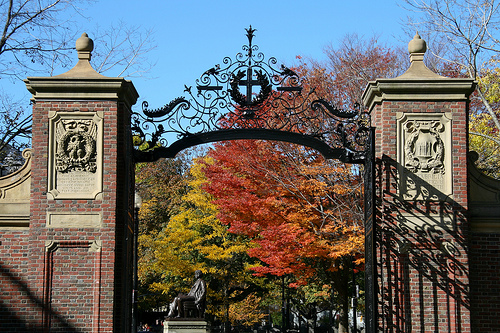
In this article, Chris (co-founder of TransferWeb) interviews me (Lan) about my transition to Stanford as a transfer student. These are the main topics I discuss:
- The academic adjustment
- The social adjustment
- Financial aid
You’ll see why, in reflecting on my experience trying to adjust to Stanford, I tell other transfer students, “Basically, don’t be like me. Don’t be a fool.”
Without further ado, here’s the interview.
—
Chris: Some people have asked about what it’s like to transfer into Stanford. How was it for you transferring in, the process of adjusting, and getting used to Stanford? agario
Lan: It was really, really hard. In hindsight, I wish I had done many things very differently. Going from UCLA to Stanford was very difficult because just the name Stanford alone was very intimidating. I, in some ways, was surprised that I got in because I could not accept the fact that I got into this extremely prestigious school, especially coming from a very humble background with very little education.
Once I got there, I was overwhelmed by how amazing everyone else seemed. I was scared, actually. It seemed like everyone around me was so accomplished. Everyone around me had already started a business or a non-profit, or they had done some amazing internship while they were in high school, and they were continuing to pursue such amazing endeavors while in college. I felt very little. You often hear the cliché that you’re a superstar in high school, and then you go to this awesome college, and suddenly you’re not a superstar anymore. That was a blow to my confidence.
I made the wrong move by giving myself a light load the first semester. I thought, “I need to adjust, so I’m just going to take three classes instead of four.” I think that might work for other people because they have transfer shock. Right when you come in, you’re shocked, and to lighten up the ramifications of this shock, you might want to take fewer classes to ease yourself into taking a more difficult load later. You have to assess your situation. For me, I like to be in intense situations, so actually, taking a lighter load was not good for me in retrospect.
I took a lighter load, and I think it made it harder for me to adjust because I wasn’t pushing myself hard enough. The following semester, when I wanted to take more classes, it was a hard transition. I should have just taken the regular load, which was four classes, the first semester.
The social transition was the hardest. We heard a lot of transfer students that we interviewed talk about how hard it is because you’re not a freshmen anymore, but you’re also not a continuing student like everyone else. I lived in a dorm with a lot of other transfer students and also non-transfer students. My roommate was a transfer student. I think because I was also very focused on doing well in school, I didn’t take the initiative to be social. I should have been actively pursuing social endeavors, but I didn’t. That’s why I’m glad we’re talking about this now, and we wrote this book on what you should do and shouldn’t do. Basically, don’t be like me. Don’t be a fool. Don’t lock yourself in the library. That is what I ended up doing, just going to the library all the time to study. At the same time, I was very involved in a lot of different clubs, and that’s another mistake I made, because I was spreading myself too thinly, trying to be an active member in everything. I wasn’t just a member; I was in leadership roles in a few clubs. That made it very difficult to be focused and emotionally and mentally devoted to an organization or to a cause.
Chris: Let me try to sum up. If you had the chance to do it over again, you would’ve taken your normal course load right off the bat. You would have made more of an effort to put yourself in more relaxed, non-formal social situations. Clubs, for example, is a formal social situation. You think you should have hung out a little bit more. Was there anything else?
Lan: The last point I made was about spreading myself too thinly.
Chris: So, don’t spread yourself too thinly in terms of clubs.
Lan: Correct.
Chris: It obviously varies every year, but some people might be curious; do you remember the schools that other transfer students transferred from when they came into Stanford the same class as you?
Lan: I remember someone was from Mills College. Everyone else was like me; they came from “lower” ranking schools.
Chris: What did Stanford do in terms of orientation services for you guys once you arrived?
Lan: We had a specific orientation just for transfer students. One of the deans was in charge of transfer students, and there was an advisor that was specifically working with transfer students. She led the orientation for transfer students. In addition to the orientation that was going on for freshmen, they had one for us. It was nice to start off with a little community.
First, there was a general welcoming of everyone, and then a meeting with our advisors. It’s a little strange. I guess the school had no choice; in the beginning they give you random advisors, and you meet with them. For me, it was useless. I got someone who was the coach of some sports team. I was not happy with that. I eventually transitioned over to an actual professor in the economics department, but that was not good to have that as my start in academic advising.
Chris: Because you’re not big into sports, right?
Lan: Not at all. We also had a peer transfer group. I think Stanford should have done a better job of maintaining a core of transfer students, a support network of transfer students, throughout the year. It was only at the beginning that we had a couple of group meetings or activities with this transfer peer group. Then, after that, it just tapered off.
Chris: Overall, how happy were you with your decision to transfer and transferring to Stanford?
Lan: I think it was one of the best decisions I made in my life, although when people ask me, “How was your experience at Stanford?” I often start with, “I didn’t know how to navigate the resources that were available to me, because I didn’t come from an educated background.” It’s nice to go to Stanford. You really move up from going to a public university when you go to a place like Stanford whose endowment is ranked third after I think Harvard and Yale. Stanford is totally loaded. Money translates into a lot of different services and resources. It’s nice just being in that kind of environment that is so rich in resources. Resources include human resources. Think about these people that surround you; they are so accomplished, they’ve done so much, and they have all these connections. It’s really inspirational. I think going to Stanford inspired me to–it’s a cliché–branch out and to broaden my horizons. It allowed me to try a lot of new things because of all the different opportunities that were available.
For example, I did a fellowship where I was a resident director assistant for a program where college students from Taiwan and Japan came and stayed for a summer. It was an intensive program in American language and culture for them, and I was one of the five Stanford assistant directors. From that experience, I was able to go abroad, because it was an exchange program. I ended up going to Japan and Taiwan with these people and the other Stanford students. From there, I ended up going back to Japan and learning Japanese. Since then, I’ve been to Japan five or six times and Taiwan at least three times, and all that started from going to Stanford and having this amazing opportunity to be a part of this program. I think going to Stanford afforded me with all these different opportunities that allowed me to open my eyes to new things, new experiences, and new people.
Chris: Can you give us a ballpark of how generous Stanford was in terms of financial aid? Was it cheaper to go there than to UCLA?
Lan: Money is huge, and again because Stanford has so much money, if you’re low-income, you’re very much taken care of. I spent three years at Stanford. There were two terms when I took time off, but I figured out a way to still be able to use financial aid from those two terms. I think in the three years I was at Stanford, I took out $13,000 in loans. I can’t remember the exact amount, but my loans from my one year at UCLA were more than $13,000, which is what I had to take out to go to Stanford for three years.
Chris: You weren’t paying for anything out of pocket at Stanford?
Lan: I had to work at Stanford, but I worked when I was at UCLA, too. I did work-study, and I worked summers.
Chris: Three years at Stanford for you cost about the same as one year at UCLA?
Lan: I would say less.
(Photo: LeeBrimelow)









